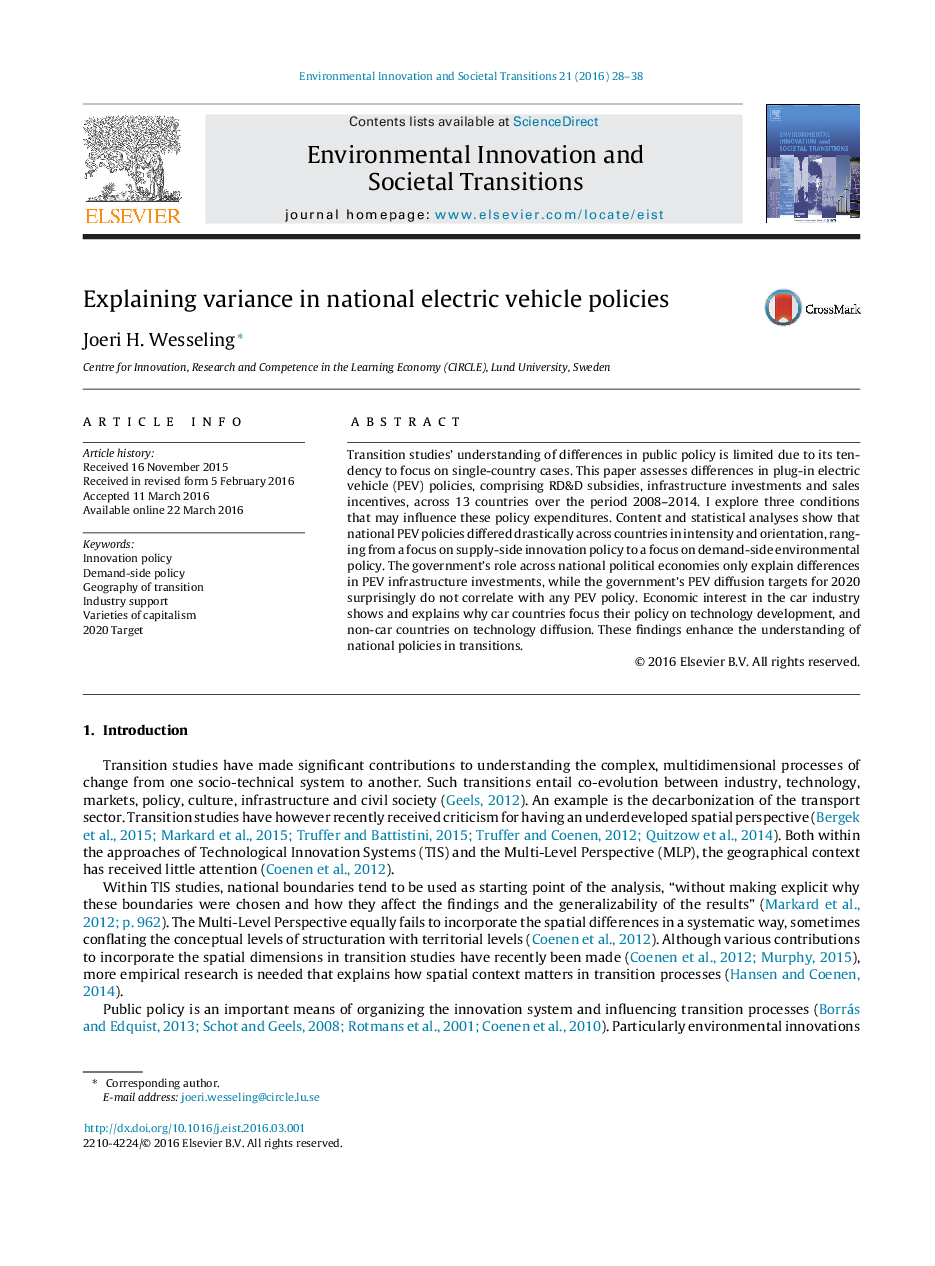| Article ID | Journal | Published Year | Pages | File Type |
|---|---|---|---|---|
| 6464226 | Environmental Innovation and Societal Transitions | 2016 | 11 Pages |
â¢National PEV policies strongly differ in intensity and range from supporting technology development to technology diffusion.â¢Accordingly, policy rationales range from innovation (support domestic industry) to environmental policy (reduce emissions).â¢Economic interest in the car industry stimulates supply-side innovation policy, but hampers demand-side environmental policy.â¢Varieties of capitalism only show that statist governments provide significantly stronger infrastructure investments.â¢More ambitious 2020 PEV diffusion targets surprisingly do not correlate with higher expenditures in any type of PEV policy.
Transition studies' understanding of differences in public policy is limited due to its tendency to focus on single-country cases. This paper assesses differences in plug-in electric vehicle (PEV) policies, comprising RD&D subsidies, infrastructure investments and sales incentives, across 13 countries over the period 2008-2014. I explore three conditions that may influence these policy expenditures. Content and statistical analyses show that national PEV policies differed drastically across countries in intensity and orientation, ranging from a focus on supply-side innovation policy to a focus on demand-side environmental policy. The government's role across national political economies only explain differences in PEV infrastructure investments, while the government's PEV diffusion targets for 2020 surprisingly do not correlate with any PEV policy. Economic interest in the car industry shows and explains why car countries focus their policy on technology development, and non-car countries on technology diffusion. These findings enhance the understanding of national policies in transitions.
